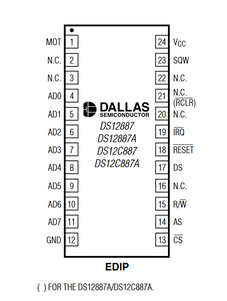First post, by Nunoalex
Hi everyone !
Please help me I might have toast this 486 motherboard after I removed the Dallas chip and installed a socket
I wanted so much this board as I dont have any other 486 board so advanced with PCI and onboard IDE 🙁~
The motherboard is unknown maker but seems to be similar/compatible with ECS UM8810P-AIO ...
The board worked and posted but it had one of those Dallas soldered directly to the board and the BIOS didn't allow to proceed booting as it didn't remember the hard drive settings...
All I did was disorder the chip with a desoldering station and then very carefully solder a socket
I was very careful and after the solder I went and checked every connection on the pins to see if they were properly soldered and all of them had continuity
Then I installed a "necroware" Dallas replacement that is working and works on other systems
When I turned the power... nothing...
then I replaced it with the old Dallas and it did boot alas it seem to be a bit unstable and/or crashed... I don't remember
I tried it a few more times .. the new chip never booted and the old Dallas booted.. until.. even the Dallas stopped booting
I tried with different dead dallas and another new "necroware" replacement and nothing
The POST analyzer stopes at POST code "07" or "D7" I'm not sure, but I think it is zero-seven ... it is an AWARD BIOS
The POST analyzer starts at C1... then jumps to some number/s very fast, then C3 and is stuck in C3 for a few seconds and then jumps to "07"
I know the boad is not totally dead because if I remove the memory modules it does beep continuously and the post code stays at C1 or C3.. I don't remember
I have tried everything, different RAMS, different graphics cards
I even think I cleared the CMOS jumper, not sure because I don't have the schematic but I cycled some of the nearby jumpers
Did I fry the chipset ? 🙁~
I don't recall doing anything out of the ordinary, I didn't short anything, I didn't change any jumper settings
I tried reseating the chips several times
I desoldered and re-soldered the socket and nothing 🙁
Please anyone help !

